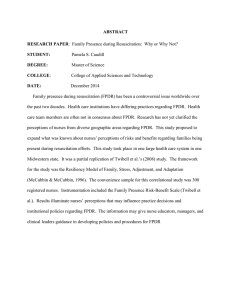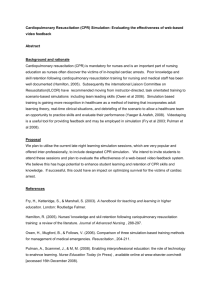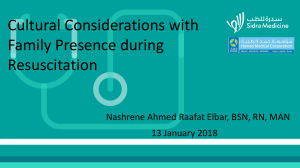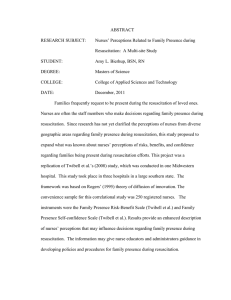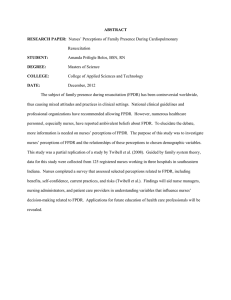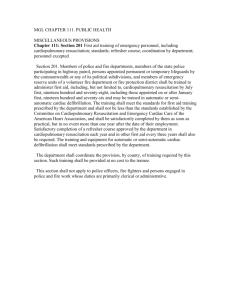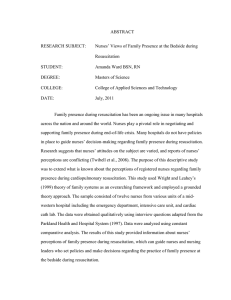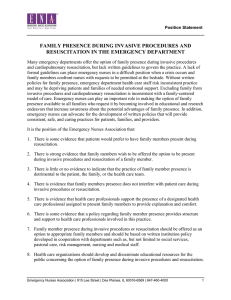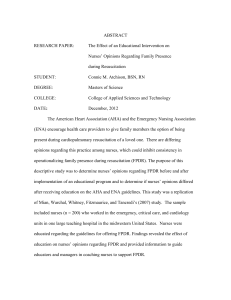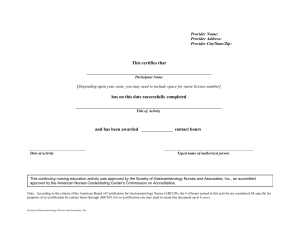One-Page Handout - American Academy of Nursing
advertisement
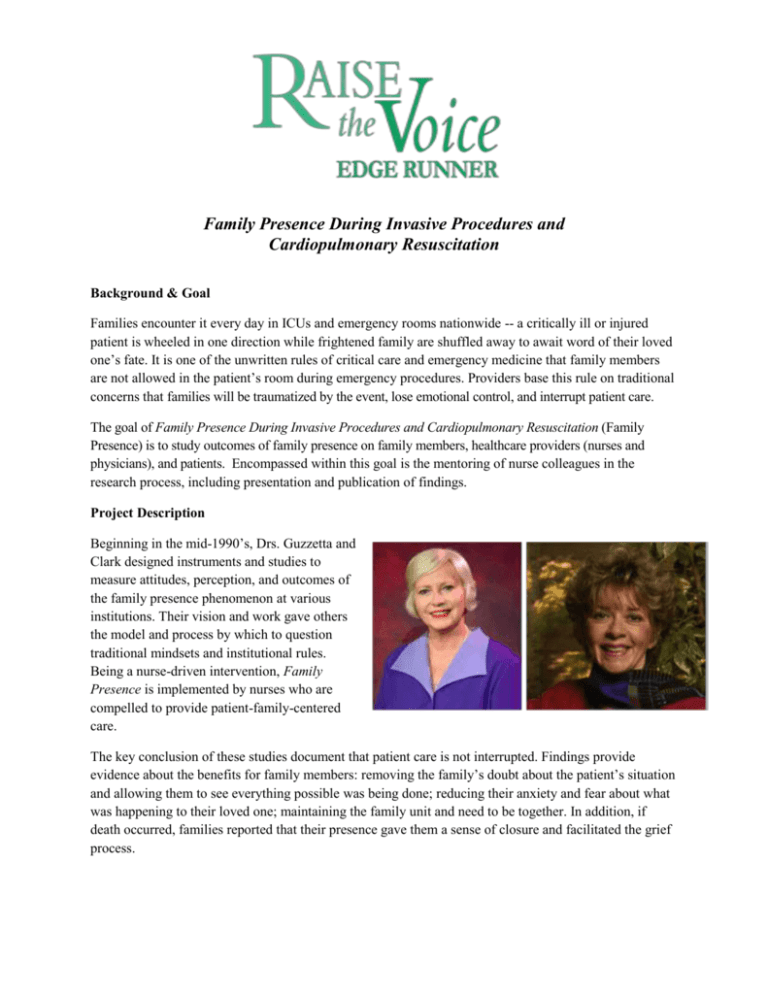
Family Presence During Invasive Procedures and Cardiopulmonary Resuscitation Background & Goal Families encounter it every day in ICUs and emergency rooms nationwide -- a critically ill or injured patient is wheeled in one direction while frightened family are shuffled away to await word of their loved one’s fate. It is one of the unwritten rules of critical care and emergency medicine that family members are not allowed in the patient’s room during emergency procedures. Providers base this rule on traditional concerns that families will be traumatized by the event, lose emotional control, and interrupt patient care. The goal of Family Presence During Invasive Procedures and Cardiopulmonary Resuscitation (Family Presence) is to study outcomes of family presence on family members, healthcare providers (nurses and physicians), and patients. Encompassed within this goal is the mentoring of nurse colleagues in the research process, including presentation and publication of findings. Project Description Beginning in the mid-1990’s, Drs. Guzzetta and Clark designed instruments and studies to measure attitudes, perception, and outcomes of the family presence phenomenon at various institutions. Their vision and work gave others the model and process by which to question traditional mindsets and institutional rules. Being a nurse-driven intervention, Family Presence is implemented by nurses who are compelled to provide patient-family-centered care. The key conclusion of these studies document that patient care is not interrupted. Findings provide evidence about the benefits for family members: removing the family’s doubt about the patient’s situation and allowing them to see everything possible was being done; reducing their anxiety and fear about what was happening to their loved one; maintaining the family unit and need to be together. In addition, if death occurred, families reported that their presence gave them a sense of closure and facilitated the grief process. Evidence of Success Consumers are powerful in changing practice when providers encounter resistance from within. Reports of our study results appeared in major newspapers and magazines such as US News & World Report, Newsweek, Redbook, Time, USA Today, The Washington Post, and The New York Times, Chicago Tribune, and American Medical News. Findings were disseminated on all major television news stations, reaching an estimated total audience of 8,636,000. The Parkland study received in-depth coverage on Good Morning America, NBC Dateline, ABC World News Tonight, and CNN. Radio broadcasts across the U.S. reached more than 10,000 stations. Numerous internet sites also carried the study findings to the public (e.g., ABC News.com, USAToday.com, Yahoo.com, CNN.com, WEBMD.com, HEALTHSCOUT.com, and REUTERSHEALTH.com. In addition, over 40 publications and presentations from this duo have shared findings of the work. Consultation to numerous institutions and other researchers has guided nurses to change the existing paradigm. More Information Cathie Guzzetta, PhD, RN, FAAN ceguzzett@aol.com Angela Clark, PhD, RN, FAAN, FAHA aclark@mail.nur.utexas.edu

